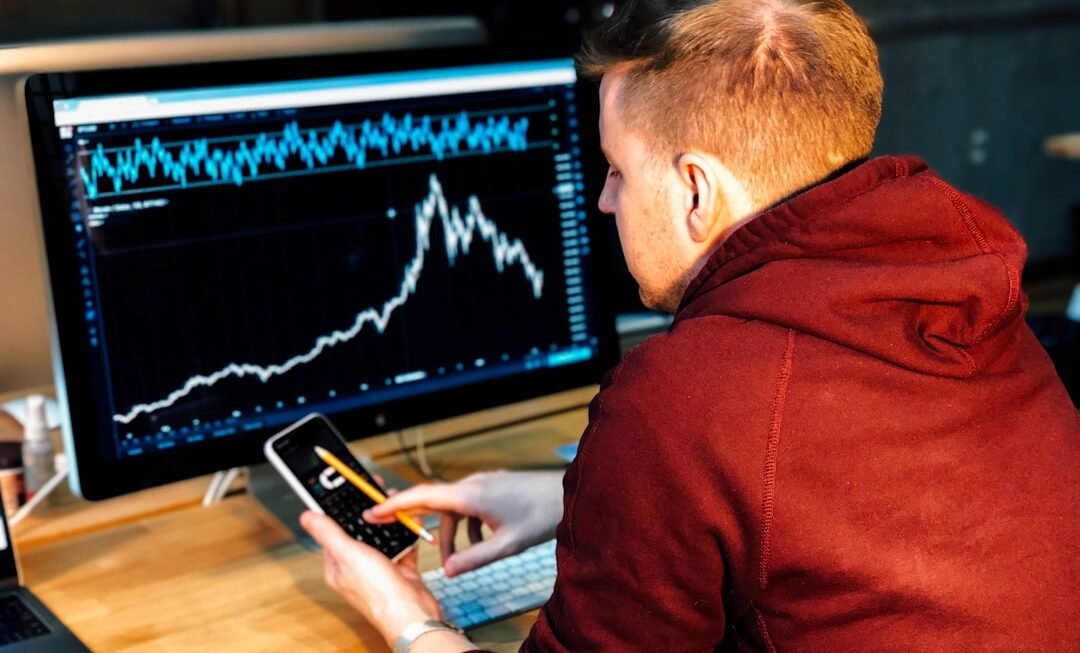The foreign exchange market, commonly referred to as the forex market, is the world’s largest and most liquid financial marketplace. It facilitates the trading of currencies and boasts a daily trading volume exceeding $6 trillion. Operating on a decentralized basis, the forex market functions 24 hours a day, five days a week, spanning various time zones.
Key participants in this market include central banks, commercial banks, hedge funds, multinational corporations, and individual traders. Forex market trends represent the overall directional movement of currency pairs over time. These trends are categorized as bullish (upward), bearish (downward), or sideways (range-bound).
Comprehending and analyzing forex market trends is essential for traders and investors to make well-informed decisions. To identify and interpret these trends, market participants employ various tools and methodologies, including technical analysis, fundamental analysis, and market sentiment evaluation.
Economic Indicators and Their Impact on Currency Fluctuations
Economic indicators are statistical data that provide insights into the economic performance of a country. These indicators have a significant impact on currency fluctuations as they reflect the overall health of an economy. Some of the key economic indicators that influence forex market trends include gross domestic product (GDP), inflation rates, employment data, consumer spending, and trade balance.
GDP is one of the most important economic indicators as it measures the total value of all goods and services produced within a country’s borders. A strong GDP growth rate is generally positive for a country’s currency, while a weak GDP growth rate can lead to currency depreciation. Inflation rates also play a crucial role in currency fluctuations.
High inflation erodes the purchasing power of a currency, leading to depreciation, while low inflation can strengthen a currency.
Central Bank Policies and Interest Rates
Central banks play a pivotal role in shaping forex market trends through their monetary policies and interest rate decisions. Central banks use interest rates as a tool to control inflation and stimulate economic growth. When a central bank raises interest rates, it attracts foreign capital inflows, leading to an appreciation of the domestic currency.
Conversely, when interest rates are lowered, it can lead to currency depreciation as investors seek higher yields elsewhere. In addition to interest rates, central bank policies such as quantitative easing (QE) and open market operations can also impact forex market trends. QE involves the purchase of government securities to inject liquidity into the economy, which can lead to currency depreciation.
On the other hand, reducing the money supply through open market operations can lead to currency appreciation.
Political Stability and Geopolitical Events
Political stability and geopolitical events have a significant impact on forex market trends as they influence investor confidence and risk appetite. A stable political environment is generally positive for a country’s currency, as it fosters economic growth and attracts foreign investment. On the other hand, political instability, corruption, or civil unrest can lead to currency depreciation as investors perceive higher risks.
Geopolitical events such as wars, conflicts, and trade disputes can also cause volatility in the forex market. These events can lead to sudden shifts in market sentiment and trigger sharp movements in currency prices. Traders and investors closely monitor geopolitical developments and assess their potential impact on forex market trends.
Market Sentiment and Speculation
Market sentiment refers to the overall attitude of traders and investors towards a particular currency pair or the forex market as a whole. It is influenced by various factors such as economic data releases, geopolitical events, central bank policies, and global macroeconomic trends. Positive market sentiment can lead to bullish forex market trends, while negative sentiment can result in bearish trends.
Speculation is another key driver of forex market trends. Traders and investors speculate on future currency movements based on their analysis of various factors. This can lead to short-term fluctuations in currency prices as speculative positions are opened and closed.
It is important to note that while speculation can create opportunities for profit, it also carries significant risks due to the volatile nature of the forex market.
Trade and Capital Flows
Trade and capital flows play a crucial role in shaping forex market trends as they reflect the balance of payments between countries. A country that exports more than it imports will have a trade surplus, which can lead to currency appreciation. Conversely, a trade deficit can lead to currency depreciation as more domestic currency is exchanged for foreign goods and services.
Capital flows also impact forex market trends as investors allocate their funds across different countries and asset classes. Foreign direct investment (FDI), portfolio investment, and speculative flows all contribute to the demand for currencies and influence their exchange rates. Changes in capital flows can lead to shifts in forex market trends as investors reallocate their portfolios based on changing economic conditions and risk perceptions.
Technological Advancements and Algorithmic Trading
Technological advancements have revolutionized the forex market by increasing its efficiency and accessibility. Electronic trading platforms, algorithmic trading systems, and high-frequency trading have transformed the way currencies are traded. These technologies have led to increased liquidity, tighter spreads, and faster execution of trades.
Algorithmic trading, also known as algo trading or black-box trading, uses computer algorithms to execute pre-programmed trading instructions. These algorithms analyze market data, identify trading opportunities, and automatically execute trades without human intervention. Algorithmic trading has become increasingly prevalent in the forex market and has contributed to higher trading volumes and greater price efficiency.
In conclusion, understanding forex market trends is essential for traders and investors to navigate the complexities of the foreign exchange market. Economic indicators, central bank policies, political stability, market sentiment, trade and capital flows, and technological advancements all play a crucial role in shaping forex market trends. By staying informed about these factors and using appropriate analytical tools, market participants can make informed decisions and capitalize on opportunities in the dynamic world of forex trading.












